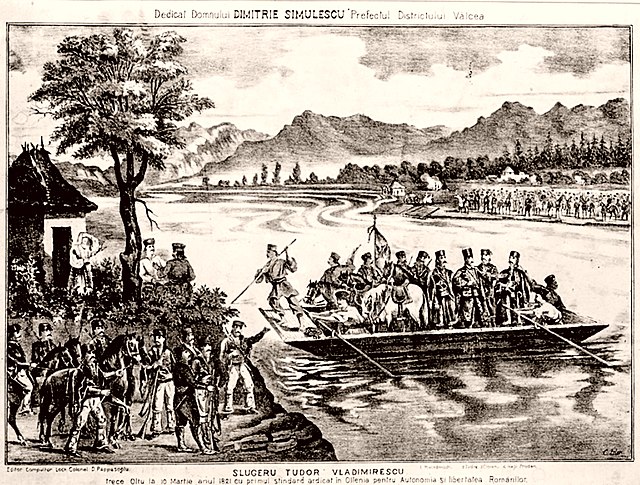Alecu Filipescu-Vulpea, also known as Aleco Filipescul, Alecsandru R. Filipescu or Alexandru Răducanu Filipescu, was a Wallachian administrator and high-ranking boyar, who played an important part in the politics of the late Phanariote era and of the Regulamentul Organic regime. Beginning in the 1810s, he took an anti-Phanariote stand, conspiring alongside the National Party and the Filiki Eteria to institute new constitutional norms. Clashing with the National Party over the distribution of spoils, and only obtaining relatively minor positions in the administration of Bucharest, Filipescu eventually joined a clique of boyars that cooperated closely with the Russian Empire. His conditional support for the Eterists played out during the Wallachian uprising of 1821, when Vulpea manipulated all sides against each other, ensuring safety for the boyars. He returned to prominence under Prince Grigore IV Ghica, but sabotaged the monarch's political reform effort and also seduced his wife Maria. She was probably the mother of his only son, Ioan Alecu Filipescu-Vulpache.

Belvedere (or Golescu–Grant) Manor, as it looked in 2013
A boyar and a Russian officer on Dealul Mitropoliei, Bucharest, in 1832
Zoe Brâncoveanu, Gheorghe Bibescu's wife and founder of Așezămintele Brâncovenești (portrait by Theodor Aman)
Filipescu tomb in Mavrogheni Church
Wallachian uprising of 1821
The uprising of 1821 was a social and political rebellion in Wallachia, which was at the time a tributary state of the Ottoman Empire. It originated as a movement against the Phanariote administration, with backing from the more conservative boyars, but mutated into an attempted removal of the boyar class. Though not directed against Ottoman rule, the revolt espoused an early version of Romanian nationalism, and is described by historians as the first major event of a national awakening. The revolutionary force was centered on a group of Pandur irregulars, whose leader was Tudor Vladimirescu. Its nucleus was the Wallachian subregion of Oltenia, where Vladimirescu established his "Assembly of the People" in February.
Pandurs crossing the Olt River at Slatina, on May 10, 1821; the four men standing at the front of the barge are, from the left: Dimitrie Macedonski, Tudor Vladimirescu, Mihai Cioranu, and Hadži-Prodan. Lithograph by Carol Isler
Tismana Monastery, the Pandurs' original base
German print of 1821, depicting Fochianos and his Arnauts being massacred by Ottomans in Bucharest
Pandurs in Bucharest, with peasant women and wayside cross. Drawing by Michel Bouquet, 1841








